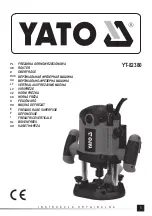
Chapter 1: Configuration
Configuring IP and Ethernet interfaces
Page
1-41
Attribute
Meaning
NAT Enable/Disable
This parameter enables or disabled the Network Address Translation (NAT)
feature for the SM. NAT isolates devices connected to the Ethernet or wired
side of a SM from being seen directly from the wireless side of the SM. With
NAT enabled, the SM has an IP address for transport traffic separate from its
address for management, terminates transport traffic, and allows you to
assign a range of IP addresses to devices that are connected to the Ethernet
or wired side of the SM.
When NAT is enabled, VLANs are not supported on the wired side of that
SM. You can enable NAT in SMs within a sector where VLAN is enabled in
the AP, but this may constrain network design.
WAN Interface
The WAN interface is the RF-side address for transport traffic.
Connection Type
This parameter may be set to
Static IP—when this is the selection, all three parameters (IP Address,
Subnet Mask, and Gateway IP Address) must be properly populated.
DHCP—when this is the selection, the information from the DHCP server
configures the interface.
PPPoE—when this is the selection, the information from the PPPoE server
configures the interface.
Subnet Mask
If Static IP is set as the Connection Type of the WAN interface, then this
parameter configures the subnet mask of the SM for RF transport traffic.
Gateway IP Address
If Static IP is set as the Connection Type of the WAN interface, then this
parameter configures the gateway IP address for the SM for RF transport
traffic.
Reply to Ping on
WAN Interface
By default, the radio interface
does not
respond to pings. If you use a
management system (such as WM) that will occasionally ping the SM, set
this parameter to Enabled.
LAN Interface
The LAN interface is both the management access through the Ethernet port
and the Ethernet-side address for transport traffic. When NAT is enabled,
this interface is redundantly shown as the NAT Network Interface
Configuration on the IP tab of the Configuration web page in the SM.
IP Address
Assign an IP address for SM/BHS management through Ethernet access to
the SM. This address becomes the base for the range of DHCP-assigned
addresses.
Subnet Mask
Assign a subnet mask of 255.255.255.0 or a more restrictive subnet mask.
Set only the last byte of this subnet mask. Each of the first three bytes is
permanently set to 255.
DMZ Enable
Either enable or disable DMZ for this SM/BHS.
Summary of Contents for PTP 450 Series
Page 51: ...Chapter 1 Configuration Quick link setup Page 1 23...
Page 155: ...Chapter 1 Configuration Configuring security Page 1 127...
Page 163: ...Chapter 1 Configuration Configuring security Page 1 135...
Page 164: ...Chapter 1 Configuration Configuring security Page 1 136...
Page 193: ...Chapter 1 Configuration Configuring radio parameters Page 1 165...
Page 194: ...Chapter 1 Configuration Configuring radio parameters Page 1 166...
Page 195: ...Chapter 1 Configuration Configuring radio parameters Page 1 167...
Page 206: ...Chapter 1 Configuration Configuring radio parameters Page 1 178...
Page 210: ...Chapter 1 Configuration Configuring radio parameters Page 1 182...
Page 636: ...Chapter 5 Troubleshooting Logs Page 5 16 Figure 95 SM Authorization log...
















































